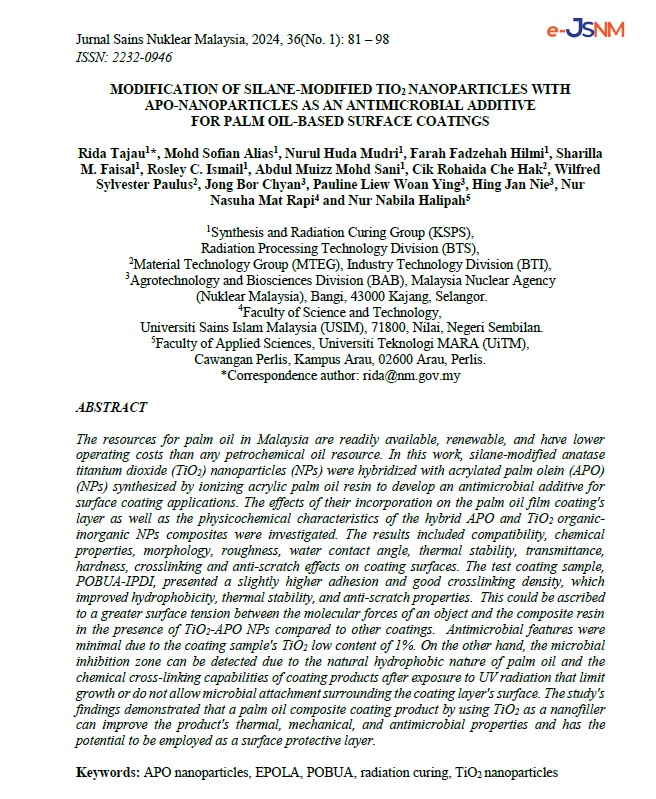MODIFICATION OF SILANE-MODIFIED TIO2 NANOPARTICLES WITH APO-NANOPARTICLES AS AN ANTIMICROBIAL ADDITIVE FOR PALM OIL-BASED SURFACE COATINGS
Keywords:
APO nanoparticles, EPOLA, POBUA, radiation curing, TiO2 nanoparticlesAbstract
The resources for palm oil in Malaysia are readily available, renewable, and have lower operating costs than any petrochemical oil resource. In this work, silane-modified anatase titanium dioxide (TiO2) nanoparticles (NPs) were hybridized with acrylated palm olein (APO) (NPs) synthesized by ionizing acrylic palm oil resin to develop an antimicrobial additive for surface coating applications. The effects of their incorporation on the palm oil film coating's layer as well as the physicochemical characteristics of the hybrid APO and TiO2 organic-inorganic NPs composites were investigated. The results included compatibility, chemical properties, morphology, roughness, water contact angle, thermal stability, transmittance, hardness, crosslinking and anti-scratch effects on coating surfaces. The test coating sample, POBUA-IPDI, presented a slightly higher adhesion and good crosslinking density, which improved hydrophobicity, thermal stability, and anti-scratch properties. This could be ascribed to a greater surface tension between the molecular forces of an object and the composite resin in the presence of TiO2-APO NPs compared to other coatings. Antimicrobial features were minimal due to the coating sample's TiO2 low content of 1%. On the other hand, the microbial inhibition zone can be detected due to the natural hydrophobic nature of palm oil and the chemical cross-linking capabilities of coating products after exposure to UV radiation that limit growth or do not allow microbial attachment surrounding the coating layer's surface. The study's findings demonstrated that a palm oil composite coating product by using TiO2 as a nanofiller can improve the product's thermal, mechanical, and antimicrobial properties and has the potential to be employed as a surface protective layer.


